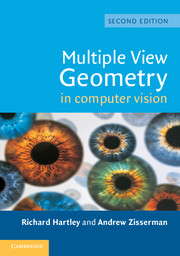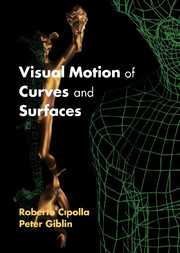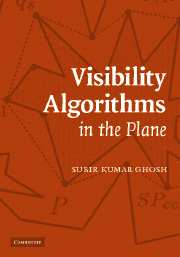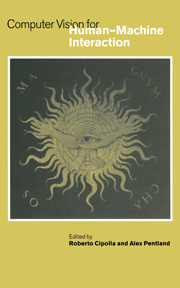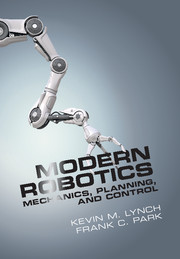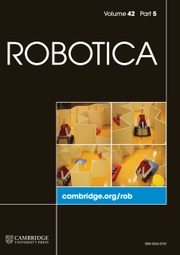Multiple View Geometry in Computer Vision
A basic problem in computer vision is to understand the structure of a real world scene. This book covers relevant geometric principles and how to represent objects algebraically so they can be computed and applied. Recent major developments in the theory and practice of scene reconstruction are described in detail in a unified framework. Richard Hartley and Andrew Zisserman provide comprehensive background material and explain how to apply the methods and implement the algorithms.
First Edition HB (2000): 0-521-62304-9
- Thoroughly updated, with over 50 algorithms and lots more extra material
- Explains the required mathematical background
- Can be used for graduate courses or as an overview of field
Reviews & endorsements
"The authors have succeeded very well in describing the main techniques in mainstream multiple view geometry, both classical and modern, in a clear and consistent way....I heartily recommend this book." Computing Reviews
Product details
April 2004Paperback
9780521540513
670 pages
248 × 175 × 36 mm
1.465kg
36 colour illus. 35 tables 124 exercises
Available
Table of Contents
- 1. Introduction - a tour of multiple view geometry
- Part 0. The Background: Projective Geometry, Transformations and Estimation:
- 2. Projective geometry and transformations of 2D
- 3. Projective geometry and transformations of 3D
- 4. Estimation - 2D projective transforms
- 5. Algorithm evaluation and error analysis
- Part I. Camera Geometry and Single View Geometry:
- 6. Camera models
- 7. Computation of the camera matrix
- 8. More single view geometry
- Part II. Two-View Geometry:
- 9. Epipolar geometry and the fundamental matrix
- 10. 3D reconstruction of cameras and structure
- 11. Computation of the fundamental matrix F
- 12. Structure computation
- 13. Scene planes and homographies
- 14. Affine epipolar geometry
- Part III. Three-View Geometry:
- 15. The trifocal tensor
- 16. Computation of the trifocal tensor T
- Part IV. N -View Geometry:
- 17. N-linearities and multiple view tensors
- 18. N-view computational methods
- 19. Auto-calibration
- 20. Duality
- 21. Chirality
- 22. Degenerate configurations
- Part V. Appendices: Appendix 1. Tensor notation
- Appendix 2. Gaussian (normal) and chi-squared distributions
- Appendix 3. Parameter estimation. Appendix 4. Matrix properties and decompositions
- Appendix 5. Least-squares minimization
- Appendix 6. Iterative Estimation Methods
- Appendix 7. Some special plane projective transformations
- Bibliography
- Index.

